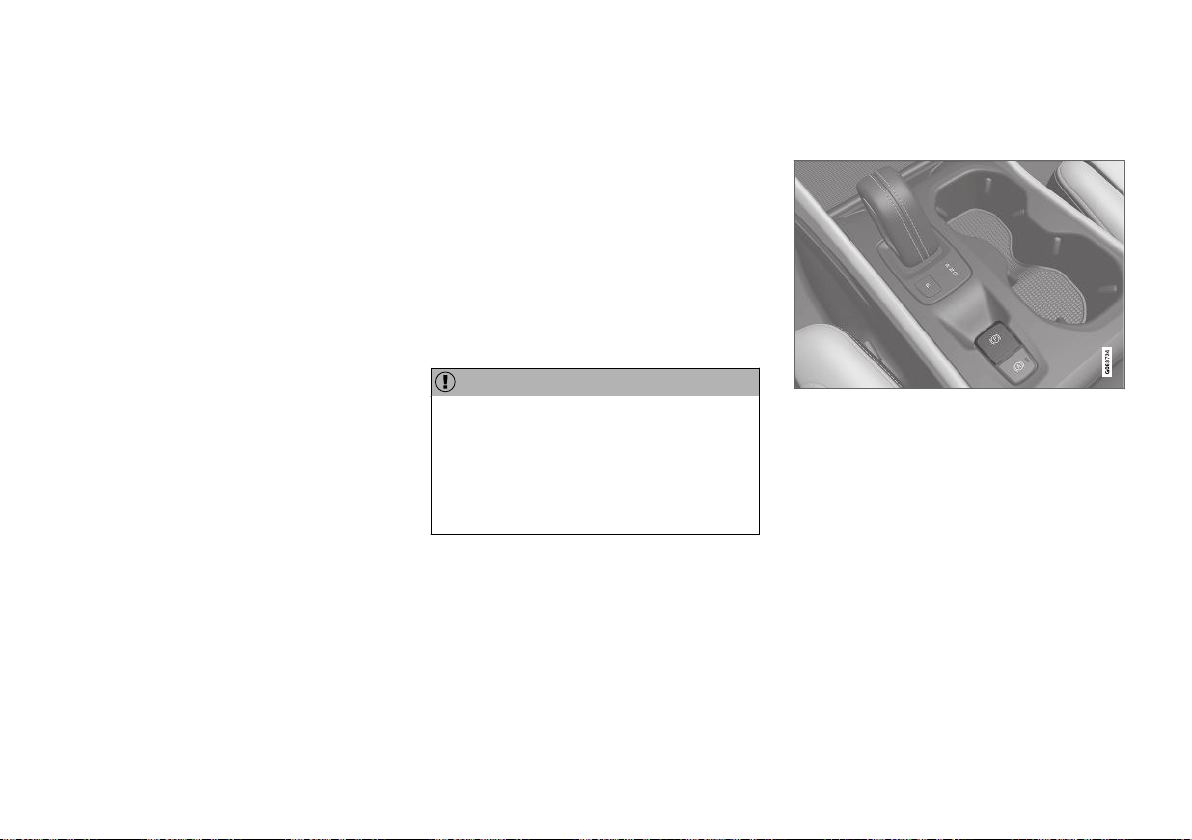Loading ...
Loading ...
Loading ...

STARTING AND DRIVING
}}
379
Braking on salted roads
When driving on salted roads, a layer of salt may
form on the brake discs and brake pads.
This could increase stopping distance. Maintain
an extra large safety distance to the vehicle
ahead. Make sure to also:
•
Apply the brakes from time to time to help
remove salt. Make sure braking does not
pose a risk to any other road users.
•
Gently apply the brakes when you have fin-
ished driving and before driving again.
Related information
•
Brakes (p. 377)
•
Braking on wet roads (p. 378)
Maintenance of the brake system
Regularly check the brake system components
for wear.
To keep the vehicle as safe and reliable as possi-
ble, follow the Volvo service schedule specified in
the Warranty and Maintenance Records Informa-
tion booklet. New and replaced brake pads and
brake discs do not provide optimal braking effect
until they are "broken in" by driving a few hun-
dred kilometers (miles). Compensate for the
reduced braking effect by applying greater pres-
sure to the brake pedal. Volvo recommends only
using brake pads approved for your Volvo.
CAUTION
The brake system's components should be
regularly checked for wear.
Contact a workshop for advice on how to do
this or let a workshop perform the inspection
- an authorized Volvo workshop is recom-
mended.
Related information
•
Brakes (p. 377)
Parking brake
The parking brake helps keep the vehicle sta-
tionary by mechanically locking two wheels.
When the electric parking brake is being applied,
a faint sound can be heard from the brake's elec-
tric motor. This sound can also be heard during
the automatic function check of the parking
brake.
If the vehicle is stationary when the parking brake
is applied, it will only be applied to the rear
wheels. If it is applied while the vehicle is moving,
the normal brakes will be used on all four wheels.
Braking will be transferred to only the rear
wheels when the vehicle is almost stopped.
Related information
•
Activating and deactivating the parking brake
(p. 380)
•
Parking on a hill (p. 382)
Loading ...
Loading ...
Loading ...